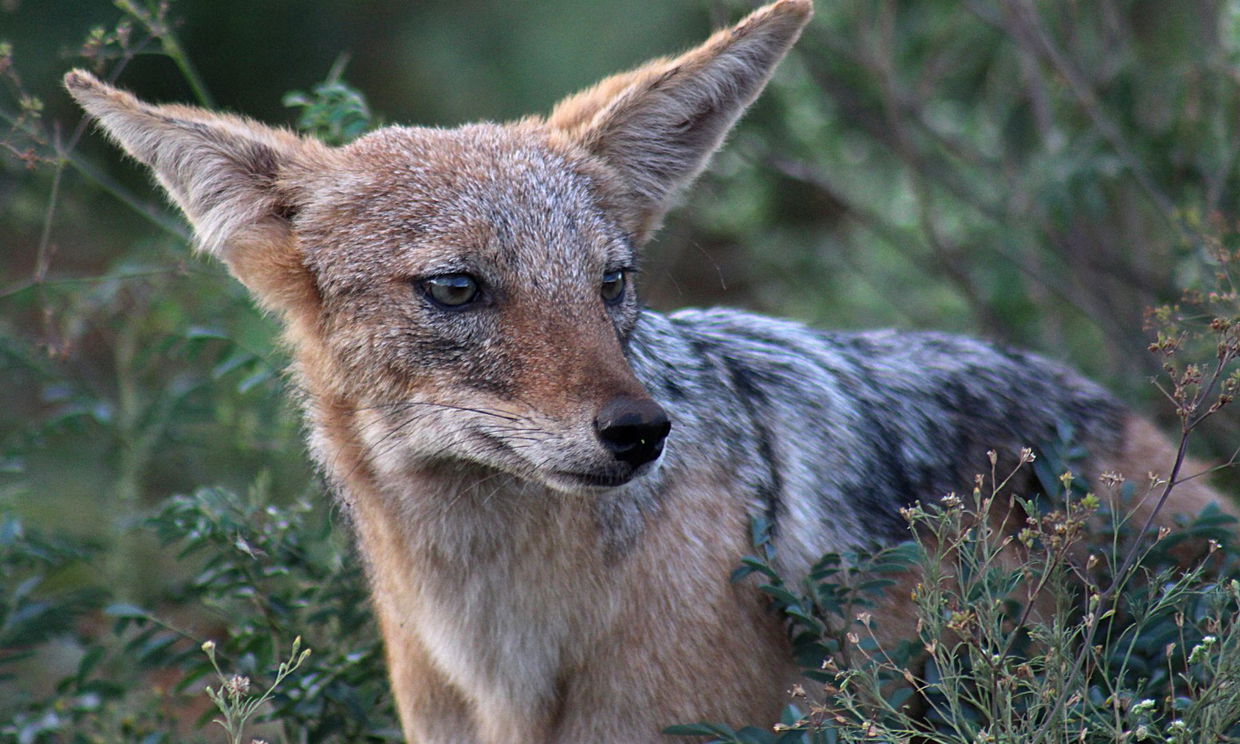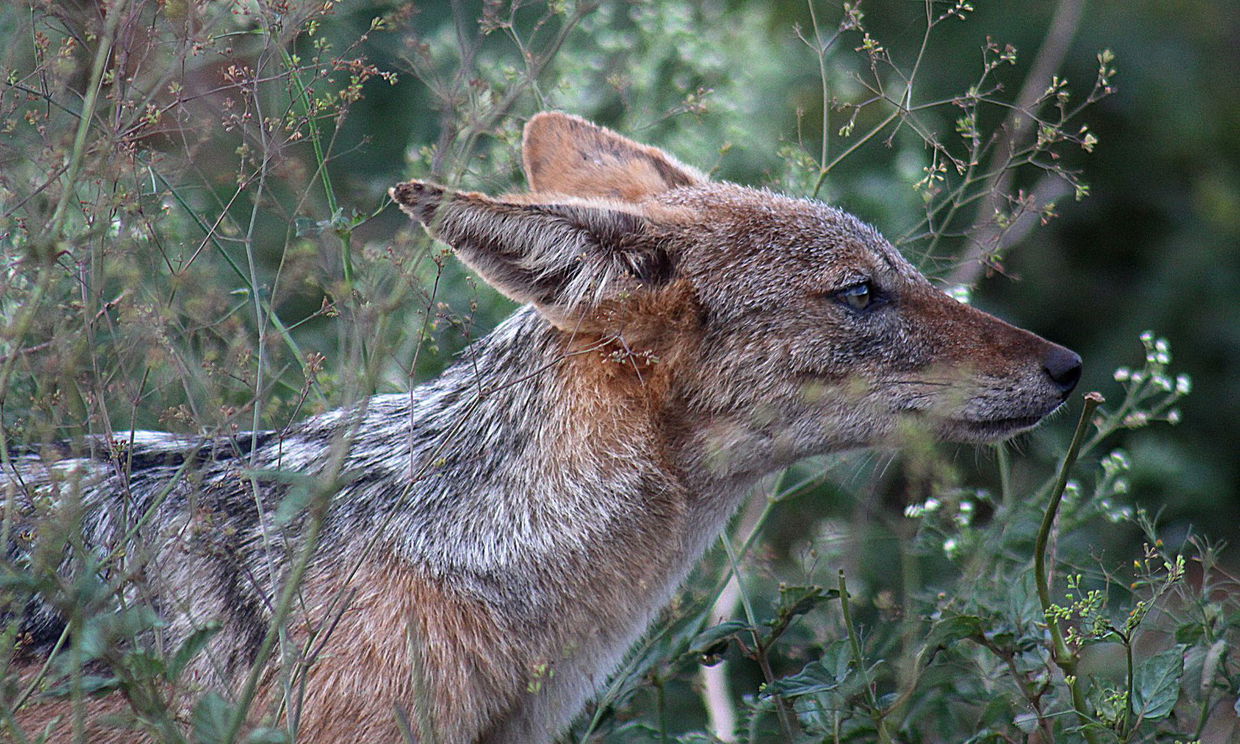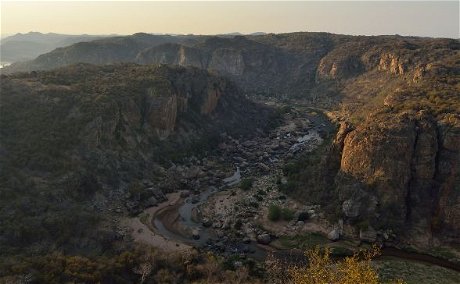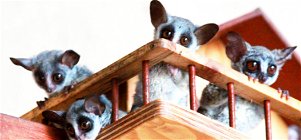Exploring Kruger National Park is a journey through Earth's geological history, showcasing ancient rocks, life's evolution, and dramatic landscapes. The park's diverse geology, from three-billion-year-old bedrock to recent Quaternary formations, reveals the planet's dynamic past. Highlights include the Lebombo Monocline and rich fossil records. This narrative emphasizes the importance of conservation and the unique opportunity to connect with Earth's ancient past at Needles Lodge.
The Black-Backed Jackal: Africa’s Cunning Night Stalker
Discover the secretive world of the black-backed jackal in Kruger National Park. Learn about its behaviours, survival strategies, and ecological importance.
Amidst the vast landscapes of Kruger National Park, a sleek figure moves silently through the shadows. The black-backed jackal (Canis mesomelas), with its sharp intelligence and keen instincts, is one of Africa’s most adaptable and resourceful predators. Though often seen scavenging, the black-backed jackal is a skilled hunter in its own right, relying on both cunning and agility to thrive within the diverse ecosystems of the African savanna.
In this article, we’ll explore the secretive world of the black-backed jackal, uncovering the unique traits, behaviours, and vital ecological role that make this animal an integral part of Kruger’s intricate natural tapestry.
As one of Kruger’s adaptable inhabitants, the black-backed jackal plays a key role in the park's complex ecosystem, much like other unique residents that make Kruger National Park an extraordinary wildlife haven.

A Master of Adaptation
The black-backed jackal is a small-to-medium-sized canid with a distinctive black “saddle” of fur running from its shoulders to the base of its tail. This unique marking, set against a reddish-brown coat, makes it easy to distinguish from other jackals and wild dogs in Kruger. But what truly sets this jackal apart is its remarkable adaptability—black-backed jackals are found across a range of habitats, from open grasslands and scrublands to semi-desert regions and coastal areas.
Thanks to its versatile diet, the black-backed jackal can survive on anything from small mammals, birds, and insects to fruits and even carrion. This adaptability has enabled the species to thrive alongside larger predators like lions and hyenas, who often leave behind remnants that the jackal can scavenge. However, scavenging is just one of its many skills; the black-backed jackal is also a formidable hunter, capable of taking down prey much larger than itself when hunting in pairs or small family groups.
From resilient zebras to opportunistic jackals, each species brings a unique adaptation to survive the varied environments of Kruger.
The Solitary and Social Hunter
While black-backed jackals are often observed hunting alone, they are also known to form strong social bonds with their mates. Unlike other canid species, these jackals are monogamous and maintain lifelong partnerships, often raising pups together year after year. Together, a mated pair can be an effective hunting team, employing coordinated tactics to outwit and capture prey. This combination of solo and cooperative hunting gives the black-backed jackal an edge, allowing it to take advantage of a wide range of food sources.
Beyond their partnership with a mate, black-backed jackals are generally solitary, preferring to work alone when food is scarce or when defending their territory from other jackals. Their territories are well-marked and vigorously defended, with both mates patrolling and scent-marking to ward off intruders.
Habitat: Open savannas, grasslands, scrublands, and even coastal areas
Diet: Omnivorous; includes small mammals, birds, insects, fruits, and carrion
Behaviour: Primarily solitary, except for lifelong bonds with mates; hunts alone or in pairs
Unique Trait: Known for monogamous pair bonds and coordinated hunting strategies
Like the African wild dog, black-backed jackals also form tight bonds, with both species showcasing fascinating social behaviours.

The Jackal’s Call: A Sound of the African Night
One of the most characteristic sounds of the African savanna is the high-pitched, haunting yip and howl of the black-backed jackal. This vocalisation serves as a means of communication between mates, as well as a way to establish territory. Jackals are known to be quite vocal, especially at dusk and dawn, when they patrol their territories or search for food.
The black-backed jackal’s howl is more than just a warning or a call to a mate; it’s a defining feature of the African landscape. In Kruger, where the night is often filled with the sounds of predators and prey, the jackal’s call can be heard over long distances, a reminder of its presence even when it’s out of sight.
Communication: Uses vocalisations like yips, howls, and barks to communicate
Unique Sound: Known for high-pitched yips that carry over long distances
Role in Ecosystem: Marks territory and communicates with mates and rivals through vocalisation
The haunting calls of the jackal are just one of many sounds that make Kruger's night-time an enchanting experience.
The Ecological Role of the Black-Backed Jackal
Although often misunderstood as mere scavengers, black-backed jackals play a critical role in Kruger’s ecosystem. By scavenging carrion, they help to reduce disease spread and clean up the environment, aiding in natural sanitation. But as hunters, they also keep populations of small mammals and birds in check, maintaining the delicate balance within the food chain.
Their opportunistic feeding habits mean that black-backed jackals can adapt to seasonal changes and fluctuations in food availability. This versatility helps them survive in Kruger’s varied landscape, from times of abundance to periods of scarcity. The jackal’s resilience and adaptability make it a key species, providing essential services that benefit both the environment and other wildlife.
Role in Ecosystem: Both predator and scavenger, aiding in natural sanitation and controlling prey populations
Dietary Flexibility: Able to adjust feeding habits based on food availability
Importance: Helps maintain ecological balance and supports the health of Kruger’s ecosystem

Masters of Stealth and Survival
With sharp senses and a cautious nature, black-backed jackals have mastered the art of survival in Kruger’s challenging environment. Their keen eyesight, acute sense of smell, and exceptional hearing allow them to detect threats from great distances. This awareness helps them evade larger predators, such as lions and leopards, who might otherwise pose a threat. Quick to learn and highly intelligent, black-backed jackals have adapted to survive in a world where competition is fierce, showing an impressive resilience that few animals of their size possess.
Their cautious, stealthy approach to life doesn’t just protect them from predators—it also enables them to approach prey and scavenge without drawing unnecessary attention. By slipping through Kruger’s diverse terrains with minimal disturbance, black-backed jackals have carved out a unique niche for themselves in one of Africa’s most competitive ecosystems.
Adaptations: Sharp senses, cautious behaviour, and exceptional intelligence
Survival Strategy: Uses stealth to avoid larger predators and to approach prey without detection
Role in Food Chain: Occupies a niche as both hunter and scavenger, making it highly adaptable
Witnessing a black-backed jackal in its natural habitat is a memorable experience, but practising respectful safari etiquette enhances both the safety and enjoyment of these encounters.
For visitors to Needles Lodge, a sighting of a black-backed jackal is a memorable experience. These sleek, fox-like animals are often seen at dawn or dusk, patrolling the edges of open spaces or slipping through the scrub in search of food. With their keen awareness and alert posture, black-backed jackals provide a fascinating glimpse into the lives of Kruger’s smaller predators. Their presence adds to the diversity of wildlife that makes Kruger so captivating.
As you relax at Needles Lodge, keep an eye and an ear out for these nocturnal hunters. Their distinctive call, echoing through the night, is a haunting reminder of the intricate web of life that thrives beyond the reach of daylight. From their clever hunting techniques to their essential role as scavengers, black-backed jackals are truly one of Kruger’s most enigmatic residents.
Meet the Jackal: Book Your Stay at Needles Lodge
Book your stay at Needles Lodge to witness the fascinating behaviours of the black-backed jackal and experience the untamed beauty of Marloth Park's nocturnal wildlife up close.
Further Reading
The bad drought has its advantages with many of the herbivores not in the best condition the cats are having a field day.




Share This Post